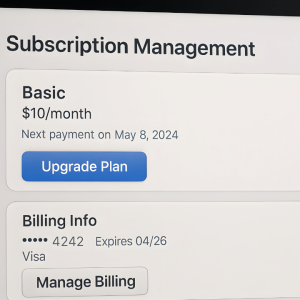When you're ready to take your idea from concept to reality, creating a Minimum Viable Product (MVP) is often one of the first steps. The MVP is the most basic version of your product that solves a core problem for your target audience, allowing you to gather user feedback and validate assumptions without committing extensive resources. Whether you're a startup or an established company, the process of building an MVP is a crucial part of your product development journey. Here's a guide to help you navigate the MVP process and ensure you’re on the right track before you hit the launch button.
1. Define Your Core Value Proposition
Before diving into development, it’s essential to clearly define what problem your MVP is solving. Your MVP should focus on solving a specific pain point for your target audience. This means you need to prioritize the features that directly address this issue and avoid overloading your product with non-essential functionalities. The core value proposition will guide the development process and ensure you stay focused on what matters most to your customers.
Action Item: Craft a simple statement that defines the value your MVP provides. Keep it focused, clear, and aligned with your target audience’s needs.
2. Identify Your Target Audience
Understanding your audience is crucial for creating an MVP that resonates with users. Who are you building the product for? What are their behaviors, needs, and pain points? A successful MVP relies on testing assumptions about your audience and validating them early. This allows you to refine your product based on real user feedback, which ultimately enhances your chances of success in the market.
Action Item: Conduct market research or engage with potential users to gather insights on their preferences and challenges.
3. Build the Right Features
Once you’ve defined your problem and audience, the next step is selecting the right features for your MVP. Focus on the key functionalities that demonstrate your product’s core value. An MVP doesn’t need to be feature-rich – it should only include what’s necessary to solve the problem and collect feedback. Anything beyond this could complicate development and delay your timeline.
Action Item: Create a prioritized feature list and choose the minimum set that will showcase your product’s value. Use tools like Product School’s feature prioritization matrix to ensure you focus on the right elements.
4. Design for Simplicity and Usability
While it’s tempting to create a product that looks polished and sophisticated, an MVP should prioritize functionality over design. Simple, intuitive design will help users focus on the core value of your product. The goal is to test your idea quickly and effectively, so a clean, user-friendly interface is essential for gathering valuable feedback without distractions.
Action Item: Opt for a straightforward design that allows users to easily understand how to use your product. Smashing Magazine offers great resources on UX/UI design principles that focus on usability.
5. Validate Your Hypotheses with Testing
Before launching your MVP, it's crucial to validate your product assumptions through testing. This could include user testing, A/B testing, or even launching a beta version to a small group of users. By testing early and often, you can gather data on how users interact with your product and identify any potential flaws in your MVP before it reaches a broader audience.
Action Item: Set up a testing process that allows you to gather insights on user behavior and iterate quickly. This will ensure that your product is meeting the needs of your target audience.
6. Prepare for Feedback and Iteration
The feedback you receive from your MVP users is invaluable. Be ready to pivot or refine your product based on this feedback. MVPs are all about learning, so it’s essential to have a plan in place for acting on the insights you collect. Whether it’s adjusting features, improving the user experience, or fine-tuning performance, your MVP is just the beginning of the iterative development process.
Action Item: Set up a feedback loop to collect and analyze user insights, and be prepared to make improvements based on the data you gather.
7. Plan for Scaling
While the goal of an MVP is to build the smallest possible version of your product, it’s essential to think ahead about scalability. Consider how your product will evolve as it gains users and you start adding more features. Having a roadmap for future development will help ensure that your product can grow efficiently and handle increased demand without compromising quality.
Action Item: Develop a scalability plan to ensure that your MVP can be expanded upon smoothly and quickly once it proves successful.
Launching an MVP with Confidence
Building an MVP is an exciting step in the product development journey, and following these key steps will help you set the stage for a successful launch. If you’re ready to turn your innovative ideas into a product that meets market demand, MP Nerds is here to help. Our expertise in MVP development and testing ensures that your product is built with the right foundation, ready to gather user feedback and evolve.
Explore how MP Nerds can support your MVP journey with tailored solutions, expert guidance, and rigorous testing. Contact MP Nerds today to get started!
For further reading on MVPs and product development, check out resources from Lean Startup, Product School, and Smashing Magazine.






